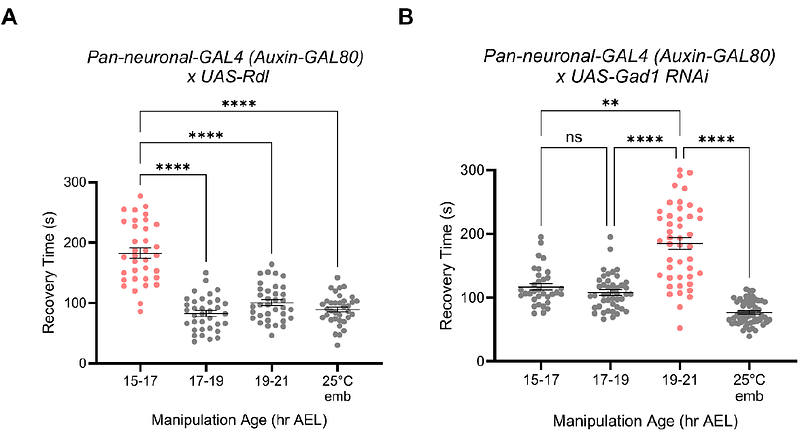Maturation of GABAergic signalling times the opening of a critical period in Drosophila melanogaster

Maturation of GABAergic signalling times the opening of a critical period in Drosophila melanogaster
Corke, J.; Huertas Radi, M.; Landgraf, M.; Baines, R.
AbstractThe occurrence of critical periods during the development of neural networks is widely documented. Activity manipulation when these periods are open can lead to permanent, and often debilitating, effects to the mature neural network. Detailed understanding of the specific contribution of critical periods to network development, however, remains elusive. This is partly because identified critical periods in mammals are present in complex sensory networks (e.g., visual and auditory) that make focused experimental manipulation challenging. It is significant, therefore, that critical periods have been identified in simpler model systems. A critical period occurs during the development of the embryonic locomotor network in the fruit fly, Drosophila melanogaster. Perturbation of neuronal activity during this period is sufficient to permanently destabilise the mature larval locomotor network: leaving it prone to induced seizures. Given a clear role of {gamma}-aminobutyric acid (GABA) in the timing of the mammalian critical period of ocular dominance, we sought to establish whether this neurotransmitter also regulates the opening of the Drosophila locomotor critical period. Utilising GABA agonists, antagonists, and genetics, we manipulated the embryonic GABAergic system and, at the end of larval life, measured an induced seizure phenotype in mature third-instar larvae. We found that potentiating GABAergic signalling, via embryonic exposure to diazepam or overexpression of the GABAA receptor rdl, induced precocious opening of the critical period. By contrast, exposure to the GABA antagonist gabazine, or knockdown of the GABA-synthetic enzyme Gad1, delayed opening. Thus, we show that critical period timing within the Drosophila CNS is dictated by GABAergic signalling, indicating a phylogenetically conserved role.